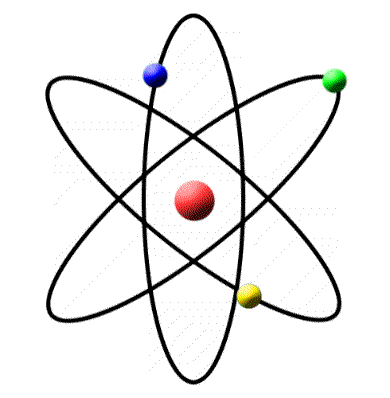Choose the correct alternative from the clues given at the end of the each statement:
(a)The size of the atom in Thomson’s model is .......... the atomic size in Rutherford’s model. (much greater than/no different from/much less than.)(b)In the ground state of .......... electrons are in stable equilibrium, while in .......... electrons always experience a net force. (Thomson’s model/ Rutherford’s model.)
(c)A classical atom based on .......... is doomed to collapse. (Thomson’s model/Rutherford’s model.)
(d)An atom has a nearly continuous mass distribution in a .......... but has a highly non-uniform mass distribution in..........(Thomson’s model/ Rutherford’s model.)
(e)The positively charged part of the atom possesses most of the mass in..........(Rutherford’s model/both the models.)
(a)The size of the atom in Thomson’s model is .......... the atomic size in Rutherford’s model. (much greater than/no different from/much less than.)(b)In the ground state of .......... electrons are in stable equilibrium, while in .......... electrons always experience a net force. (Thomson’s model/ Rutherford’s model.)
(c)A classical atom based on .......... is doomed to collapse. (Thomson’s model/Rutherford’s model.)
(d)An atom has a nearly continuous mass distribution in a .......... but has a highly non-uniform mass distribution in..........(Thomson’s model/ Rutherford’s model.)
(e)The positively charged part of the atom possesses most of the mass in..........(Rutherford’s model/both the models.)
Solution and Explanation
(b)In the ground state of Thomson's model,the electrons are in stable equilibrium. However, in Rutherford's model,the electrons always experience a net force.
(c)A classical atom based on Rutherford's model is doomed to collapse.
(d)An atom has a nearly continuous mass distribution in Thomson's model, but has a highly non-uniform mass distribution in Rutherford's model.
(e)The positively charged part of the atom possesses most of the mass in both the models.
Top Questions on Atoms
- Describe the atomic model of Rutherford. How did Bohr model removed its drawbacks?
- Describe in brief, the \(\alpha\)-scattering experiment. Write down about the atomic-structure from the observation obtained from the experiment.
- What are the demerits of Rutherford model of an atom ?
- Prove that, in the Bohr model of the hydrogen atom, the time period of revolution of an electron in the \( n \)-th orbit is proportional to \( n^3 \).
- Assertion (A): The potential energy of an electron revolving in any stationary orbit in a hydrogen atom is positive.
Reason (R): The total energy of a charged particle is always positive.
Concepts Used:
Atoms
- The smallest unit of matter indivisible by chemical means is known as an atom.
- The fundamental building block of a chemical element.
- The smallest possible unit of an element that still has all the chemical properties of that element.
- An atom is consisting of a nucleus surrounded by one or more shells of electrons.
- Word origin: from the Greek word atomos, which means uncuttable, something that cannot be divided further.
All matter we encounter in everyday life consists of smallest units called atoms – the air we breath consists of a wildly careening crowd of little groups of atoms, my computer’s keyboard of a tangle of atom chains, the metal surface it rests on is a crystal lattice of atoms. All the variety of matter consists of less than hundred species of atoms (in other words: less than a hundred different chemical elements).

Every atom consists of an nucleus surrounded by a cloud of electrons. Nearly all of the atom’s mass is concentrated in its nucleus, while the structure of the electron cloud determines how the atom can bind to other atoms (in other words: its chemical properties). Every chemical element can be defined via a characteristic number of protons in its nucleus. Atoms that have lost some of their usual number of electrons are called ions. Atoms are extremely small (typical diameters are in the region of tenths of a billionth of a metre = 10-10 metres), and to describe their properties and behaviour, one has to resort to quantum theory.